| Andere Namen | guillotine blades, guillotine cutters, guillotine knife, industrial blades for paper, paper converting knives, paper cutting blades, paper cutting knife materials, paper slitter blades |
|---|---|
| Herkunftsort | China |
| Anwendung | Kunststoff, Papier, Karton, Vliesstoff, Film, Folie, Etiketten, Klebeband, Textil, Verpackung, Teppich, Taschen, Gummi |
| Material | 65Mn,9CrSi,Cr12MoV,SKD-11,HSSl |
| Modell-Nr | CV-RS |
| OEM-Service | Verfügbar |
| Zahlungsbedingungen | L/C, T/T, Western Union |
| Paket | Kartonschachtel, in Holzkisten |
| Lieferzeit | 7-20 Tage |
Teilen mit:
Industrial paper cutting knives, also known as paper cutting blades or guillotine blades in some contexts, are robust and precision-engineered cutting tools designed for use in industrial paper cutting machines. These knives are built to efficiently and accurately cut large stacks or continuous webs of paper and paperboard in high-volume production environments. The term “industrial paper cutting knives” emphasizes their heavy-duty construction and suitability for demanding, continuous operation in manufacturing and converting processes within the paper, printing, and packaging industries.
Industrielle Papierschneidemesser are essential tools in various stages of paper processing and converting. Their key applications include:
The selection of material for Industrielle Papierschneidemesser is crucial for achieving optimal cutting performance, longevity, and resistance to wear, especially when dealing with various paper types, including abrasive and coated papers. Common materials include:
Coatings such as titanium nitride (TiN) or chromium can be applied to enhance surface hardness, reduce friction, and improve corrosion resistance, further extending the life of Industrielle Papierschneidemesser.
Industrielle Papierschneidemesser come in various shapes and configurations tailored to specific cutting processes and machinery. Common shapes include:
The geometry of the industrial paper cutting knife, including the blade angle, bevel, and edge sharpness, is critical for achieving clean, accurate cuts and maximizing blade life. The correct selection of blade shape and material depends on the type of paper being cut, the cutting process, and the production volume requirements.
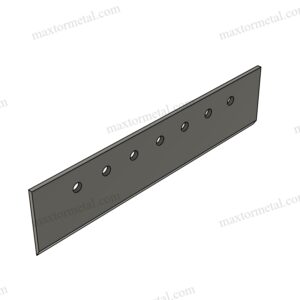
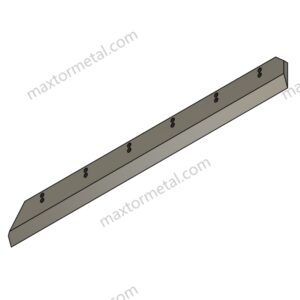
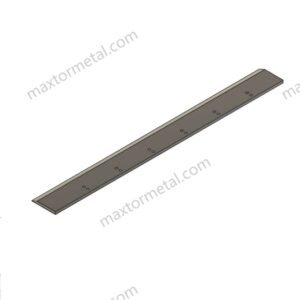

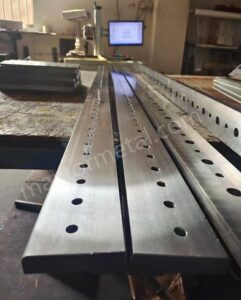
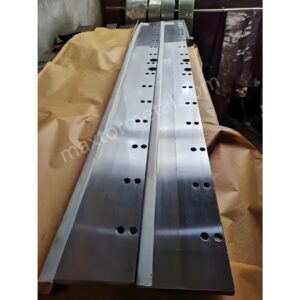
Genießen Sie den Komfort des Imports. Vom Transport bis zur Zollabfertigung kümmern wir uns um den gesamten Prozess. Sie müssen nur die Mehrwertsteuer zahlen und warten, bis die Waren beim Unternehmen eintreffen.
Wir haben gesehen, wie seine Klingen in unzähligen Anwendungen eingesetzt wurden, und sind bereit, jedes Projekt zu bewältigen, das Sie uns stellen – mit Genauigkeit, Haltbarkeit und unübertroffen wettbewerbsfähigen Preisen.
Ob Sie Zeichnungen, Skizzen oder Muster liefern, wir können für Sie zeichnen und fertigen. Wir können Ihnen auch dabei helfen, bestehende Designs und Spezifikationen zu ändern, um nahezu jede industrielle Werkzeuganwendung zu verbessern. Bitte kontaktieren Sie unser engagiertes Vertriebsteam, um Ihre spezifischen Anforderungen zu besprechen.
Zur Kontrolle der Qualität werden eine Reihe von Tests und Kontrollen durchgeführt, darunter die Erstmusterprüfung, die Prüfung eingehender Materialien und zertifizierter Materialien, die Qualitätskontrolle während des Prozesses und die Endqualitätsprüfung.
Egal, ob Sie Importeur, Händler, Großhändler oder Endverbraucher sind, Sie sind bei uns herzlich willkommen – mit minimaler Mindestbestellmenge, ohne lästige Anfragen und mit mehr Freiheit beim Einkauf.
Werden Sie Ihr exklusiver Monitor und übertragen Sie regelmäßig alle wichtigen Knoten in der Produktionslinie, egal wie weit sie entfernt sind. So haben Sie den Produktfortschritt so weit wie möglich im Blick!
Der ultimative Leitfaden zur Wartung von Guillotine-Schneideklingen: Verlängern Sie die Lebensdauer und optimieren Sie die Leistung
Nanjing Metal Industrial CO., Limited
Mingjue-Industriepark, Lishui, Nanjing, Jiangsu, China
Bleiben Sie mit unseren neuesten Nachrichten auf dem Laufenden.